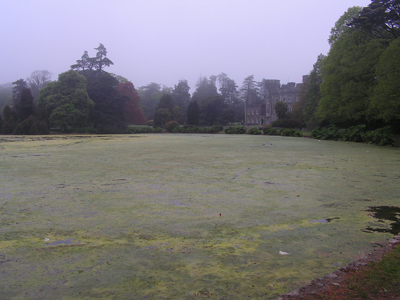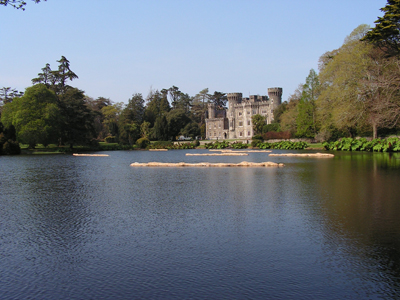Barley Straw
Inhibitory effect of barley straw on algal growth

Declining ecological water quality in lakes has been correlated with an increase in planktonic algae growth and a greater proportion of cyanobacteria and higher forms of macrophytes. Incidental losses to a surface waterbody originate from the use of organic and inorganic fertilizers and soil test P.
The aim of the study was to determine optimal barley application rates, gather information on the construction and placement of barley booms and to highlight discrepancies in methodologies used in previous algal inhibitor studies. A final objective of the study was to propose a way forward to achieve a better understanding of the inhibitory powers of barley on algal growth.
The study concluded that the key to unlocking the algal inhibition properties of barley lies in the protocols used in laboratory experiments. A review of the literature highlighted a number of inconsistencies in the barley variety used, algal species tested, barley liquor preparation and phenol extraction methodologies. This led to differences in the growth responses for the same species of algae tested. This project highlighted several successful forms of investigation:
- using commercially available compounds i.e. with known shikimate pathway producing phenols and acids, which can then be combined with algal assays of different algal species
- using commercially available algal species from which batch cultures are grown, which are then added to barley liquor of different ages.
- using in-vivo fluorescence whereby the filtrate can then be analysed via HPLC/MS.
In conclusion, barley straw can be an effective low cost method for controlling problematic algal growth on lake systems, however strict protocols in relation to preparation an location of straw booms should be adhered to in order to ensure optimal water quality and ecological results.
The key to unlocking the algal inhibitory powers of barley can be obtained by using specific barley strains, commercially available algal assays and modern investigative techniques.

Further information can be obtained from Dr. Daire Ó hUallacháin (daire.ohuallachain[at]teagasc.ie); Dr Owen Fenton owen.fenton{at}Teagasc.ie
Further information
Fenton, O. and Ó hUallacháin (2012) Growth of third generation biomass (microalgae) for biofuel production using agricultural nutrient surpluses: a review. Algal Research, Vol 1, 49-56.
Fenton, O. and Ó hUallacháin, D. (2011) Inhibitory effect of barley on algal growth. 5721.
Ó hUallacháin, D. and Fenton, O. (2010) ‘Barley (Hordeum vulgare) induced growth inhibition of algae: a review’ Journal of Applied Phycology, 22: 651 – 658.
Ó hUallacháin, D. and Fenton, O. (2011) “Barley as a method of Algal control” in Barley: Production, Cultivation and Uses. Eds Steven B. Elfson. (14pgs)
Fenton, O. and Ó hUallacháin, D, (2008) Artificial lake amelioration: implications for submerged aquatic vegetation. Proceedings of the Agricultural Research Forum 2008. Tullamore, March 2008
Fenton, O., Hyde, B., Ó hUallacháin, D., Healy, M.G., Regan, J.T. and Rodgers, M. (2007). Tackling nutrient loss head on: catching the nutrients that got away. 23_tresearch200705 Vol 2(2) p 32-34
